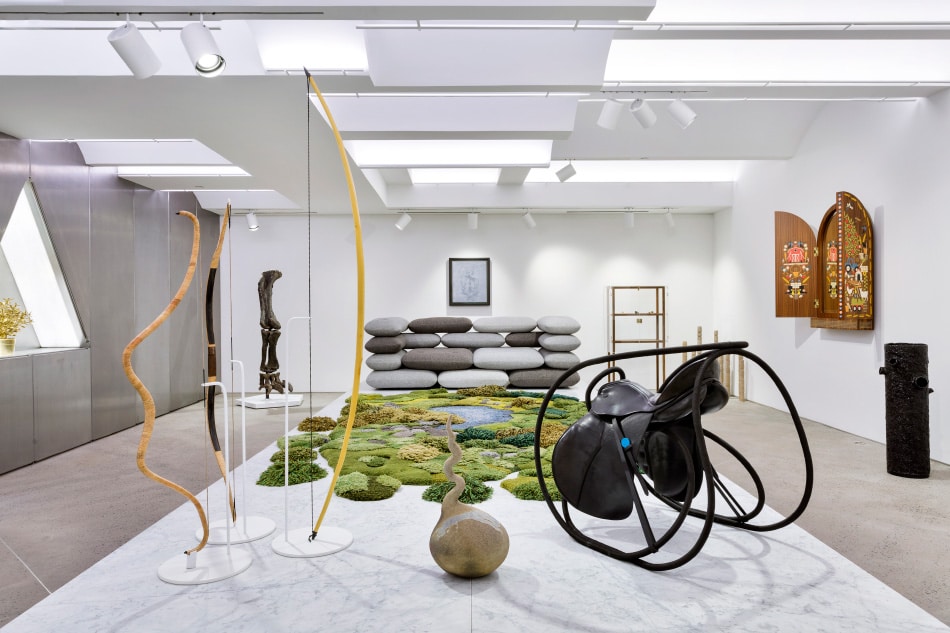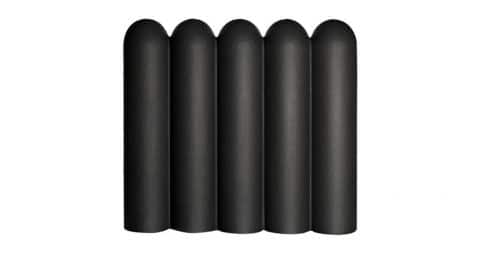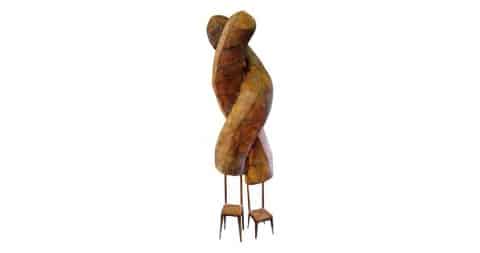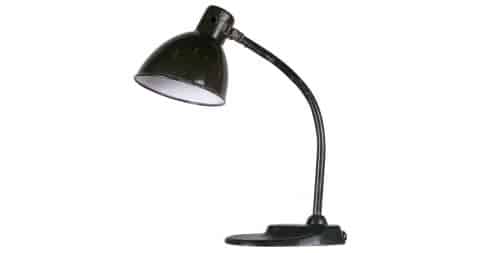October 16, 2017When Chamber opened in 2014, tucked under New York’s High Line on bustling West 23rd Street, it seemed determined to upend conceptions of what a contemporary design gallery could be. With his new space, then 26-year-old wunderkind Juan Garcia Mosqueda sought to combine, and further, the largely commercial enterprise of Murray Moss at his former eponymous Soho shop and the more conceptual, academic mission of design curator Paola Antonelli at the Museum of Modern Art. The young Argentine-born gallerist — who had worked for both Moss and Antonelli — imagined Chamber as a 21st-century Wunderkammer of fine design.
And what a wonderful Wunderkammer it was. With the help of the Manhattan firm MOS Architects, Garcia Mosqueda conceived a space that felt like a subterranean sanctuary, with a barrel-vaulted, dramatically illuminated ceiling and an assortment of semi-hidden alcoves in which to display items.

Now studying the history and philosophy of design at Harvard, in Cambridge, Massachusetts, Juan Garcia Mosqueda opened his pioneering fine design gallery, Chamber, in 2014. He closed the physical space in July but continues to commission pieces and sell work through Chamber’s 1stdibs storefront. His current apartment, near campus, features Tomás Alonso’s Mr. Light, a B&B Italia sofa, a Ronan and Erwan Bouroullec chair and a Charles and Ray Eames screen. Photo by Brian Doben
As for the pieces themselves, Garcia Mosqueda partnered with different artists or designers to curate different collections, which were showcased in exhibitions at the gallery and featured one-of-a-kind, rare and limited-edition objects and art, some commissioned expressly for the occasion. He made it a point to mix vintage with contemporary items and even had a signature scent created to accompany his gallery’s premiere presentation.
For that debut outing, Garcia Mosqueda teamed up with husband-and-wife Dutch designers Job Smeets and Nynke Tynagel, founders of Studio Job. Smeets and Tynagel filled Chamber with such vintage icons as an Osvaldo Borsani desk and a Joe Colombo chair, plus newly commissioned furniture from the likes of Maarten Baas and pieces of their own design, including a jacquard pillow featuring a design called Naughty Bavaria.

A cabinet from Studio Swine’s foamed-aluminum Metallic Geology collection — included in Krzykowski’s “Just What Is It” show — takes its inspiration from Chinese landscapes and that country’s traditional tea cabinets. Behind sits Oskar Zięta’s green Sonar screen. Photo by Lauren Coleman
Later presentations were assembled by American photographer and filmmaker Andrew Zuckerman, who took over the gallery from October 2015 to August 2016, and designer and curator Matylda Krzykowski. Krzykowski’s series of four exhibitions, staged over the course of eight months, culminated in “Room with Its Own Rules,” an all-female show celebrating work by Lindsey Adelman, Hilda Hellström, Sabine Marcelis and Mira Nakashima, among others.
That exhibition, which closed this past summer, became the last Garcia Mosqueda would mount in his High Line space. In an email sent to clients and fans at the end of July, the dealer announced that the gallery was “shifting paradigms” and would no longer be “constrained to a physical space.”
Thus began Chamber’s second act — and Garcia Mosqueda’s, too. The gallery shuttered its brick-and-mortar location, and in August, the dealer moved from New York to Cambridge, Massachusetts.
He’s now studying the history and philosophy of design at Harvard, the better to focus on the research and topics that most excite him. He’s also plotting pop-up shows around the world, continuing to work with a wide array of artists on special commissions and selling work online through Chamber’s 1stdibs storefront.
“At a personal level, I wanted to keep nurturing myself, to keep learning and to have the extra motivation to continue reading and growing,” Garcia Mosqueda explained recently, taking a break from his classes at Harvard’s Graduate School of Design. (He already has a design degree from the School of the Art Institute of Chicago.) “The dialogue between material culture and philosophy is fascinating, and I want to explore that further.”
Here, more of Garcia Mosqueda’s thoughts on the past, present and future of Chamber and of good design.

The founders of Studio Job, Dutch designers Job Smeets and Nynke Tynagel, included Swip Stolk and Theo Ruth’s No. 72 Hotstuff armchair, in carved birch and leather, in Chamber’s Collection 1, which they assembled in 2014.
Why was it important to you to have the kind of physical space you originally created for Chamber?
I wanted to have a totalized work of art, and to have that be evident in all the aspects of what we did. So there was a synergy between the studio that did the graphic design and MOS Architects and the curator. All these people combined created this new contemporary cabinet of curiosities. We kept reworking the concept, changing perspective and challenging ourselves, asking, “How can we include more objects from other disciplines?”
What led to the decision to launch Chamber’s second act as a largely online-only venture?
It won’t be online only, because I will still do shows in different parts of the world, so there will be physical exhibitions. But it seemed to me that the audience I’m talking to, in a lot of cases, doesn’t live in New York. We have a lot of clients who are on the West Coast, in Florida, the UK, France, Belgium. Chamber will be a curatorial platform that keeps selling and showing designs, but it will become more global.
Who will curate the next generation of Chamber shows?
It will mostly be me doing the curation, focusing on my different topics of interest. The everyday practical requirements of running a physical space demanded so much of me I didn’t have time to really commit to curating. From now on, I’m working with galleries and other spaces to bring exhibits to them.

Studio Job also featured Ravage’s Nurse Betty stoneware plate in their 2014 collection for Chamber.
Can you say what the next show will focus on and where it will be?
The first will be a show on contemporary furniture done by nine architecture studios. It will be at Friedman Benda this coming winter.
It’s happening at the same time that [trailblazing mid-century design dealer] Mark McDonald is curating an exhibition there in the upstairs gallery for which he’s selecting classic pieces from architects of the twentieth century — Frank Lloyd Wright, Richard Meier, Frank Gehry, Marcel Breuer, Warren Platner, Charlotte Perriand, Ettore Sottsass and Philip Johnson.
I wanted to duplicate that in the downstairs project space but do it more as a survey of contemporary architecture, showing people reworking different typologies of furniture and lighting. So, you have Manhattan’s MOS Architects; you have SO-IL, from Brooklyn; Ania Jaworska, who’s in Chicago; Pezo Von Ellrichshausen, which is a firm based in Concepción, Chile; Andy and Dave, a young duo based in Brooklyn; and Milliøns, who are in Los Angeles; and several more.
I’ve commissioned new work from all of them. My brief to them was, “Do whatever you want that reflects the ethos of your company.” There’s an intertextuality to their designs that challenges traditional archetypes of furniture. It’s work that seeks to create a new domestic landscape.

Garcia Mosqueda meets with Zeina Koreitem and John May, the architects behind the Los Angeles–based studio Milliøns, in their Cambridge offices. He has commissioned furniture from the duo for the first show he’ll mount since closing Chamber’s physical space. The pop-up exhibition, which will present pieces by nine contemporary architecture studios, will fill the project space at New York’s Friedman Benda gallery this winter. Photo by Brian Doben

The dealer devoted his booth at the 2016 Armory Show in New York to work by Studio Job. Moving forward, Garcia Mosqueda expects to take a break from showing at art and design fairs to focus on mounting pop-up shows, like the one coming to Friedman Benda. Photo courtesy of Chamber
Can you give an example?
Carrie Norman and Thomas Kelley’s firm, Norman Kelley, which has offices in New York and Chicago, will be presenting a collection of three impersonations of three indicative styles of early-American furniture — Shaker, Chippendale and Federal — to reflect the studio’s favoring of anachronism over invention and craftiness over craft.
More exactly, each piece aspires to be something else. The bottom of a side chair separates from its back to float about a room as a stool, and a rolltop desk withdraws into itself to reveal an armchair. Like a child’s easily detectable hiding spot, the works are not wholly successful at concealing their true type. In this sense, the collection misbehaves by attempting to behave.
Is there anything else that you’re working on under the banner of Chamber?
The next presentation after the one at Friedman Benda will be a Studio Job solo show in Los Angeles in 2019 at Exhibit 101. I’m also working on a book about alternative modes of exhibiting design with Matylda Krzykowski, who was the curator of the last collection in the New York space.
And I’m going to be doing a design documentary, which is one of the reasons why I’m here at Harvard, to bring that project to life — but I can’t say more about that just yet.
Finally, how do you find Boston so far as a design city?
I like having more personal space here, compared with New York. You get to really enjoy the city, look up to the sky. I spend a lot of time at Harvard at Le Corbusier’s Carpenter Center. I go to Renzo Piano’s Fogg Museum. I’ve created this little architectural circuit for myself that is really fascinating.

Garcia Mosqueda finds design inspiration in Cambridge at Le Corbusier’s Carpenter Center for Visual Arts. “The ramp on Quincy Street allows you to constantly be confronted with different perspectival views of the building,” he says, “playing with light and shadows, and giving it a volumetric dimension that shifts as you move along.” Photo by Brian Doben
TALKING POINTS
Juan Garcia Mosqueda shares his thoughts on a few choice pieces.











